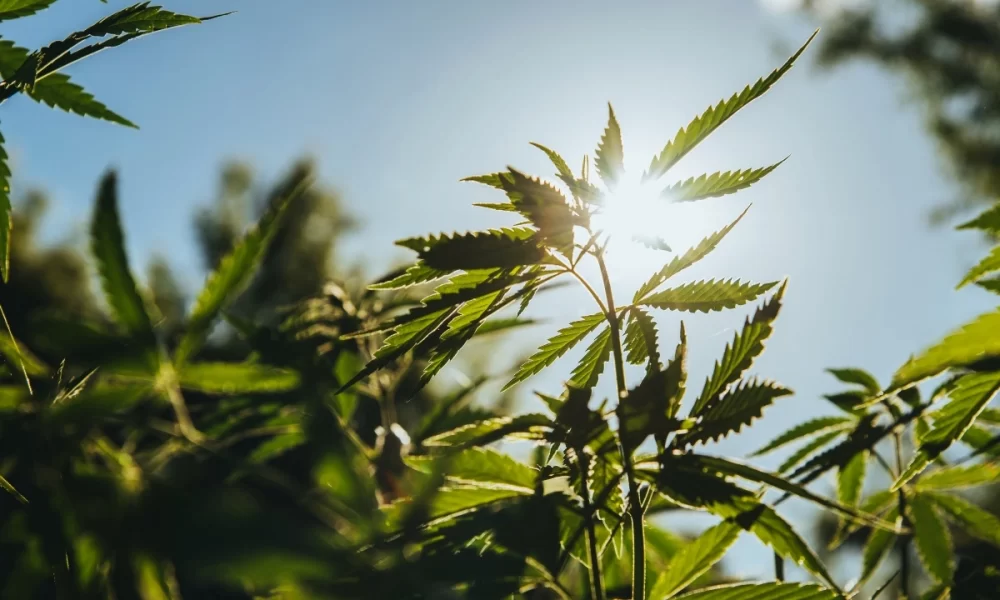Business
US hemp plantings plummet in 2022 as production shifts to northern states

Hemp plantings in the United States were nearly cut in half in 2022, with 28,400 acres dedicated to growing the plant – slightly more than the acreage set aside for Christmas trees.
Put another way, at 44.4 square miles, outdoor and indoor hemp cultivation in the U.S. would fit almost entirely on Hilton Head Island, the beach and golf resort area off the coast of South Carolina.
Or, for Mickey Mouse fans, most of the nation’s hemp could be grown on the 43 square miles of Walt Disney World in Orlando, Florida.
Last year’s plantings represent a 48% decline in acreage from 2021, when U.S. farmers planted 54,500 acres of indoor and outdoor hemp.
Hemp production has been declining because of a lack of clarity from the federal government on the regulation and use of hemp products – particularly those containing CBD and other hemp-derived cannabinoids.
An analysis of U.S. Department of Agriculture hemp-planting data from 2022 also shows a shift north as Southern states below the 37th parallel have almost entirely abandoned the crop.
With fewer plants in the ground, the value of hemp production also declined sharply in 2022.
In its 2023 National Hemp Report released in April, the USDA valued total hemp production in 2022 at $238 million, down 71% from $824 million in 2021.
By contrast, retail sales of hemp-derived CBD products are still growing.
Retail CBD sales are projected to bring in $4.5 billion in 2024, according to projections from Chicago-based analytics firm Brightfield Group published in the 2023 MJBiz Factbook.
That total could grow to $6 billion in 2024 if a favorable guidance comes in the next year from the U.S. Food and Drug Administration.
In the meantime, the FDA, the USDA and Congress have offered little in the way of leadership for current and potential hemp growers.
In January, the FDA said it wouldn’t regulate products containing CBD because its existing regulatory frameworks were inadequate.
The FDA instead asked Congress to tell the agency what to do.
Hemp production shifts
While the industry awaits guidance, hemp cultivation is shifting to growers in more northern states, including Idaho, Montana, Oregon and Wisconsin.
The 54,500 acres of hemp grown in 2021 was spread throughout the country, with most states active – if some just barely.
But in 2022, farmers in states below the 37th parallel – including Arizona, New Mexico, Oklahoma and Texas – had mostly abandoned growing the crop.
“There have been compounded issues that have been a detriment to the program,” Sully Sullivan, executive director of the Hemp Industry Trade Association of Arizona, told MJBizDaily via email.
Among other factors, he cited a market glut, supply-chain issues, lack of data on how to grow in Arizona’s dry climate and soil as well as mandated cutbacks in water use.
Farmers in other states have also severely cut production.
Colorado was the top hemp producer in 2021, with 10,100 acres planted either outdoors or indoors in a facility such as a greenhouse.
By 2022, the state had only 1,600 acres of hemp planted.
Utah went from 2,500 acres in 2021 to just about 70 a year later.
Hemp acreage in some states did grow in 2022, but the amounts weren’t significant.
Virginia almost doubled hemp plantings from 2021 but ultimately planted only a total of 650 acres.
Farmers in Kansas, Missouri, South Dakota and Wisconsin all increased plantings by 35% or more in 2022, contributing a combined total of 6,500 acres to the nation’s production.
As goes Kentucky
Kentucky is the epitome of hemp’s boom and bust.
At its peak in 2019, farmers there planted 26,500 acres of hemp – a number surprisingly close to the current total U.S. production.
Then hemp plantings crashed 81% in 2020, to only 5,000 acres.
The number of growers in the state went from 978 in 2019 to just 240 last year.
Plantings have since leveled off, and the state has been planting a bit more than 1,000 acres for the past two years.
That production is being driven by CBD.
Most of the hemp grown in Kentucky – at times, 90% or more – has been destined for CBD and cannabinoid use, with the rest for fiber (10%) and grains/seeds (3%).
Don’t expect changes in Kentucky or the rest of the United States without guidance from the federal government to clarify or expand the use of hemp or hemp-derived CBD as dietary supplements or animal food.
Source: https://mjbizdaily.com/hemp-planting-plummets-in-2022-as-production-shifts-to-northern-states/